Monstrosity is a commonly used symbol in folklore, ancient epics, and modern fiction. Monsters in literature often represent our hidden fears, moral dilemmas, or the unknown. The Creature in Frankenstein, Gregor Samsa in The Metamorphosis, and other examples of monster symbolism in literature challenge our understanding of seemingly ordinary things and ideas. A closely related phenomenon, dehumanization – as seen in Night by Elie Wiesel – is frequently used to highlight the topics of violence, discrimination, and human rights.
Numerous literary masterpieces use monster symbolism and show the dire consequences of dehumanization. In this article by Custom-Writing.org, you will:
- Find the definition of monster in literature
- Learn how dehumanization is portrayed by various authors
- Delve into many powerful examples of these themes
Read on to explore the many faces of monstrosity in literature!
👾 Monstrosity: Meaning
Let’s start with the question: What do people see as monstrous? Usually, the words “monstrous” or “monstrosity” denote something ugly, evil, or frightening. For example, creatures like basilisks or dragons represent things that don’t fit into the accepted natural categories.
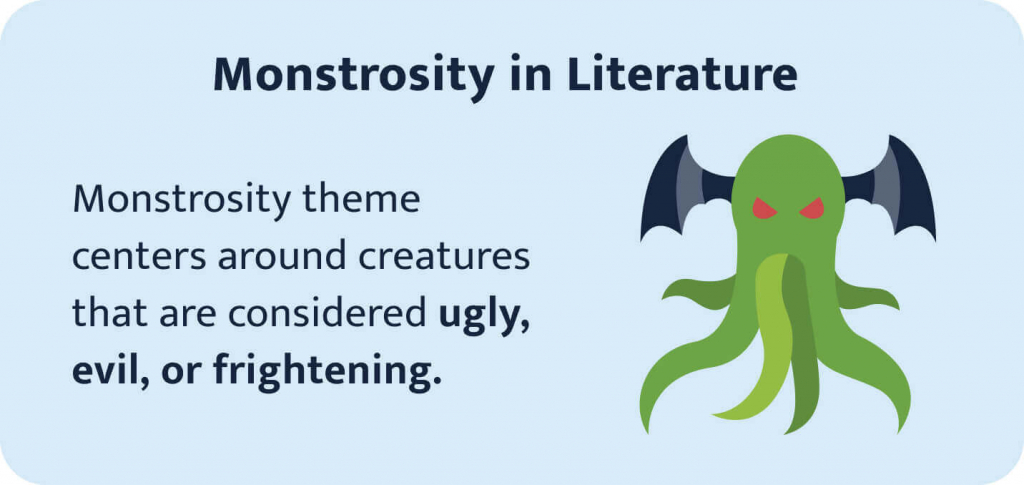
By defining what is deviant, deformed, or monstrous, people can determine what’s “normal.” Exercising monsters reinforces our conception of morality and social boundaries. It would be considered immoral to kill a human. Killing a monster, however, can even be regarded as noble.
Characteristics of a Monster
In literature, monsters are fictional characters primarily found in horror, science fiction, and folklore. They have a specific set of qualities that make them terrifying in the eyes of others. Here are some essential characteristics:
Monster Archetype: What Do Monsters Represent?
According to Carl Jung’s theory, monsters are the reflections of our personality aspects called the shadow. It refers to people’s qualities and desires that are condemned by society. Because people struggle to acknowledge them, these qualities become repressed, and they manifest themselves unconsciously.
Jung believed that one of the ways to cope with one’s shadow aspects is through projection. For example, people can project their repressed emotions and characteristics on monsters. That’s why monsters often function as scapegoats.
What Do Monsters Symbolize in Our Culture?
Monsters represent the unknown and people’s darkest fears. Monsters in stories often make us question what can be called human. They also help people to define social boundaries. By looking at monsters in stories, we can learn about people’s perceptions of the world.
🧛 Monsters in Literature
From this section, you will learn about literary monsters and their types. You will also find here our list of the top 10 most iconic monsters.
History of Monsters in Literature
Literary monsters are timeless. We can find them in all types of writings, from ancient mythology to modern novels. The depiction of monsters, however, has undergone some changes through time:
- Initially, they were mostly presented as evil creatures or antagonists of the hero.
- In modern fiction, they are often shown as sympathetic and misunderstood.
Mythology Monsters
When we are thinking about some ancient myth, we often remember the monster and not the hero. Why is that so? Well, monsters have to be impressive: after all, they challenge heroes to prove their worth and gain power and recognition.
In his book Hero with a Thousand Faces, Joseph Campbell describes a heroic narrative common for most myths. In this narrative, a hero protagonist needs to go through a transformative adventure and return home victorious. It is also known as the hero’s journey.
As you may have guessed, monsters are an essential part of the hero’s journey. They usually serve as antagonists in the stages of test and final battle. Think of Cyclops or Scylla from Homer’s Odyssey as an outstanding example of a memorable monster.
Medieval Monsters
During the Middle ages, monsters had two primary roles:
- They served as a counterexample to humans. Monsters demonstrated to people what can be considered “human” by being the opposition to it.
- They were the embodiment of something frightening and unknown. Monsters were often connected to spirits and were believed to inhabit exotic lands.
Medieval Europeans were fascinated by the newly discovered lands. They described native people and animals of other continents as something otherworldly. An old epic poem Beowulf is an excellent example of such perception. The text features a vast range of magical creatures, animals, and people.
Victorian Era Monsters & Gothic Monsters
The idea of monstrosity undergoes some change in the Victorian Era. That’s also the time when Gothic Novel becomes popular.
Duality is one of the major focuses of Gothic literature. The characters, including antagonists, become more complex and diverse. Monsters are now depicted more sympathetically. Instead of cruel creatures that inspire dread, we see characters that were misunderstood and ostracized by people. It is also around Victorian Era that the theme of monstrosity gets immersed with the genre of science fiction.
The Creature from Frankenstein and Mr. Hyde from Strange Case of Dr. Jekyll and Mr. Hyde are good examples of monsters that cause the readers to sympathize with them as they are created during experiments. These characters make us wonder if one is born a beast or if life makes them one.
Monster Tropes Types
Monsters in literary works can be divided into several categories:
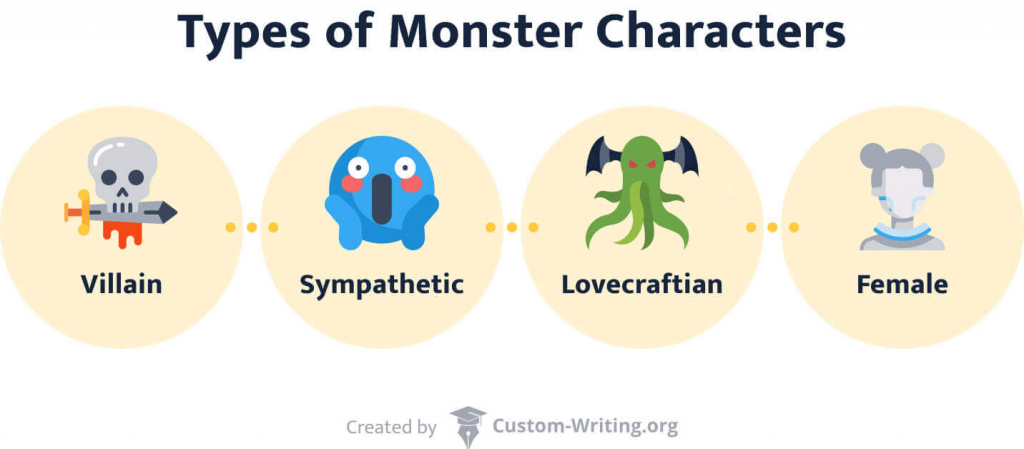
We’re going to discuss the most prominent types in the following sections.
Monster Villain Characteristics
Villain monsters are usually complex characters that don’t necessarily fall into the category of antagonists. They’re characterized by motivations such as greed or desire for power.
Villain monsters can communicate evil without violence. Also, these types of characters often combine an ordinary appearance with some horrific bestial elements.
Bram Stoker’s Count Dracula is a great example of a monster villain. He looks like a human but is monstrous by nature.
Misunderstood & Sympathetic Monsters
A sympathetic monster is a character that appears like a monster to others but doesn’t do anything bad. Isolation and ostracization make such characters turn their backs on people and commit crimes, even if initially they had no bad intentions.
Sympathetic monsters are often created by society. For instance, the hunchback Quasimodo, like Frankenstein’s monster, is shamed for his physical deformity and manipulated by people. He is perceived as a monster just because of his unusual looks.
Lovecraft Monsters: Cosmic Horror
Cosmic horror is a subgenre of Gothic literature. It emphasizes the fear of the unknown and pictures humans as vulnerable and ignorant.
The first name that comes to mind when we talk about cosmic horror is H. P. Lovecraft. The two terms—”Lovecraftian horror” and “cosmic horror” are used interchangeably. In the world of cosmic horror, monsters are far more powerful than people. They challenge human values and the way they perceive the world.
Lovecraftian horror has some unique characteristics that distinguish it from other works of Gothic literature. It includes the use of:
- uncanniness,
- ambiguity,
- elements of thriller,
- psychological horror.
Female Monsters in Literature
In the classic Greek and Roman myths, many villains and monsters are female. Many myths and legends reinforced certain expectations about women’s behavior and appearance. These stories also, to a certain extent, reflected the way women were seen as destructive. It shows males’ desire to control and rule over the female.
Female monsters symbolize someone who goes beyond the patriarchal order and therefore poses a threat to the male protagonist. Grendel’s mother from Beowulf is a good example of such a character.
Monsters in Children’s Literature
In the 17th-19th century literature, children’s books were filled with portrayals of death and brutality. Fairy tales featured frightening monsters; they emphasized physical harm and evoked terror. Most of these stories served as cautionary tales, with monsters representing the common dangers of those times.
Today’s children’s literature doesn’t include explicit descriptions of violence. Horror for kids took a form of fantasy fiction that features magical creatures such as dragons and fairies.
Maurice Sendak’s Where the Wild Things Are is an excellent example of contemporary children’s literature. It has elements of mystery and features various magical creatures but doesn’t contain any violence.
Top 10 Literary Monsters
From Greek mythology to contemporary horror, literature is full of fantastic beasts. Yet, only a few of them stay in our memory after we finish the story. Here is a list of the top 10 literary monsters that served as an inspiration for many other fictional characters:
- Scylla from Homer’s Odyssey. A mythical sea monster with 5 heads and 12 legs.
- Grendel from Beowulf. A powerful and bloodthirsty man-eating creature.
- Count Dracula from Bram Stoker’s Dracula. A centuries-old vampire who serves as a blueprint to almost all subsequent vampire characters.
- The Creature from Mary Shelley’s Frankenstein. An articulate and intelligent monster created by Victor Frankenstein from the dead bodies.
- Smaug from J. R. R. Tolkien’s The Hobbit. A dragon that guards a hoard of treasure.
- Edward Hyde from Robert Louis Stevenson’s The Strange Case of Dr. Jekyll and Mr. Hyde. An alternate personality of Henry Jekyll that embodies his inner monsters.
- Pennywise from Stephen King’s It. An ancient, shape-shifting creature that often appears as a clown and preys upon the children of Derry.
- Cthulhu from H.P. Lovecraft’s The Call of Cthulhu. A Great Old One who lies beneath the Pacific Ocean in the sunken city of R’lyeh.
- The Jabberwocky from Lewis Carroll’s Jabberwocky. A giant chimera with wings, a dragon’s body, a fish-like head, and a pair of talon-like hands.
- Fenrir—a monstrous wolf from Norse mythology. The son of the demonic Loki and a giantess, Angerboda.
Theme of Monstrosity in Frankenstein
Monstrosity is one of the central themes in Frankenstein, with the Creature serving as a great example of a misunderstood monster.
Initially, the Creature has no ill intentions: he simply wants to be loved and accepted. However, he is born out of Victor’s selfish desire to prove himself by creating a human out of body parts of deceased criminals. This fact alone determines his tragic fate. He becomes a victim of ostracism and turns into a real monster.
As for Victor, he can be seen as a victim of his pride and isolation. He wants to prove himself to people and be recognized. After the monster kills his family, Victor dedicates the rest of his life to killing his own creation. In the end, his ambition only leads him to alienation and self-destruction.
Want to know more about these themes in the novel? You’re welcome to check out our article on themes in Frankenstein.
What Is the Name of Frankenstein’s Monster?
Frankenstein’s monster remains unnamed in Mary Shelley’s novel. However, the monster is referred to in various ways throughout the book. He is called “creature,” “fiend,” “wretch,” “demon,” “devil,” “thing,” “being,” and “ogre.” Moreover, he is erroneously referred to as “Frankenstein,” depicting a longing for identity and connection with his creator, Victor Frankenstein.
Monstrosity in Frankenstein: Quotes
Here are some quotations from Mary Shelley’s novel that reflect the idea of monstrosity:
Of my creation and creator I was absolutely ignorant, but I knew that I possessed no money, no friends, no kind of property. I was, besides, endued with a figure hideously deformed and loathsome; I was not even of the same nature as man. I was more agile than they and could subsist upon coarser diet; I bore the extremes of heat and cold with less injury to my frame; my stature far exceeded theirs. When I looked around I saw and heard of none like me. Was I, then, a monster, a blot upon the earth, from which all men fled and whom all men disowned?”
Frankenstein, Monster, Chapter 13
I beheld the wretch — the miserable monster whom I had created. He held up the curtain of the bed; and his eyes, if eyes they may be called, were fixed on me. His jaws opened, and he muttered some inarticulate sounds, while a grin wrinkled his cheeks. He might have spoken, but I did not hear; one hand was stretched out, seemingly to detain me, but I escaped and rushed downstairs.
Frankenstein, Victor Frankenstein, Chapter 5
Accursed creator! Why did you form a monster so hideous that even you turned from me in disgust? God, in pity, made man beautiful and alluring, after his own image; but my form is a filthy type of yours, more horrid even from the very resemblance. Satan had his companions, fellow devils, to admire and encourage him, but I am solitary and abhorred.
Frankenstein, Monster, Chapter 15
⚡ Dehumanization Definition
Dehumanization is a process by which opponents perceive each other as lacking human qualities. It happens when one group of people views another one as inferior, evil, or criminal. Typically, we believe that all people have certain rights that shouldn’t be violated. Unfortunately, it is also true that individuals seen as outsiders are not always treated fairly.
Dehumanization often results in violence, human rights violations, and genocide. It’s also worth noting that both the abuser and the abused tend to deprive another party of human qualities. It, in turn, can only intensify the conflict and lead to even more casualties and discrimination.
Types of Dehumanization
Dehumanization can take many forms. Often the criteria for exclusion are race, ideology, gender, or cognitive capacity.
Dehumanization of Jews in the Holocaust
Holocaust is one of the most prominent examples of dehumanization. There were religious, political, and racial reasons that stimulated the discrimination of Jews. In the eyes of Nazis, Jewish people were not people at all.
According to the interview published by NPR, Hitler’s regime employed modes of contemporary discourse to dehumanize the Jews. The Jews were referred to as Untermenschen (German for subhuman) or parasites in the media and newspapers. Integral to propaganda’s success was the use of animal imagery. It depicted Jewish people as bloodthirsty predators. These portrayals stirred feelings of disgust and fear in German people.
Dehumanization of Slaves
This type of dehumanization has affected both slaves and slave owners in many ways. The slaves have to work in inhuman conditions and are constantly abused. They also suffer from depression and loneliness. It leads to low self-esteem, PTSD, and a loss of cultural identity. In turn, slave owners become affected by dehumanization by depriving others of their human qualities and rights.
Dehumanization in War
Dehumanization during war works as a coping mechanism. It allows people to justify killing or even perceive it as something noble. In battle, enemies are associated with acts of evil and depravity. The created image of the enemy is crucial in enabling soldiers to kill as required. It also encourages civilians to support military actions and maintain enthusiasm even when casualty figures start to rise.
Dehumanization of Women
It is no secret that for a very long time, and even now, women have been seen merely as objects of desire. Sexualization achieved through revealing clothing and bright make-up causes people to attribute fewer human traits to women. Such objectification of a person reduces them to a mere body and can be considered dehumanization.
📚 Theme of Dehumanization in Literature: Examples
In literary works, the theme of dehumanization is presented from different angles and perspectives. It’s often connected to the theme of monstrosity, as it deals with the problem of humanity vs. inhumanity. Some literary works reinforce certain stereotypes and therefore contribute to the problem of dehumanization. However, most works focus on revealing the inhumane nature of discrimination.
Many stories that explore the concept of dehumanization have a strong emotional effect on the readers and resonate with them. They serve as cautionary tales and encourage us to learn from the past. There are some good examples of works that talk about dehumanization and human nature:
- Beloved by Toni Morrison,
- Heart of Darkness by Joseph Conrad,
- All Quiet on the Western Front by Erich Maria Remarque.
Examples of Dehumanization in Night
Night by Elie Wiesel explores many critical issues that occurred during World War II and especially the Holocaust. Dehumanization is one of the book’s most prominent themes.
The characters who display the most violence in the book are Nazi officers and SS doctors. They believe that some nations, including the Jews, should be exterminated. One example of the graphic depiction of violence in Night is a teenager’s execution. The prisoners have to observe the boy’s torture and then witness his death.
In his book, Elie Wiesel also shows how cruelty breeds more cruelty. Forced to live in inhuman conditions, prisoners themselves gradually start to lose their minds and become increasingly violent. You can learn more about it from our article on themes in Night.
Dehumanization Quotes in Night
Here are some quotations from Wiesel’s book that show how people in concentration camps were deprived of their humanity:
Remember it always, let it be graven in your memories. You are in Auschwitz. And Auschwitz is not a convalescent home. It is a concentration camp. Here, you must work. If you don’t you will go straight to the chimney. To the crematorium. Work or crematorium—the choice is yours.
Night, SS officer, Chapter 3
The night was pitch-black. From time to time, a shot exploded in the darkness. They had orders to shoot anyone who could not sustain the pace. Their fingers on the triggers, they did not deprive themselves of the pleasure. If one of us stopped for a second, a quick shot eliminated the filthy dog.
Night, Narrator, Chapter 6
Listen to me, kid. Don’t forget that you are in a concentration camp. In this place, it is every man for himself, and you cannot think of others. Not even your father. In this place, there is no such thing as father, brother, friend. Each of us lives and dies alone.
Night, Blockälteste, Chapter 8
Monstrosity & Dehumanization in The Metamorphosis
The Metamorphosis by Franz Kafka is another example of a literary work that deals with dehumanization. After Gregor Samsa wakes up as an insect, he gradually loses all his human qualities.
As a result of a transformation, the man also becomes alienated from his work and society in general. Gregor’s mental transformation, however, happens long before the physical one. He was isolated from his family for a very long time because of his demanding job. When Gregor turns into an insect, his family members start to neglect him. The man loses his humanity in their eyes. With time Gregor himself slowly starts to deny his human nature as well.
There are plenty of other interesting themes in the novella. Feel free to read about them in our article on themes in The Metamorphosis.
The Metamorphosis Quotes about Dehumanization
Here are quotations from the novella that demonstrate how alienation and transformation affected Gregor and his family:
They had even got used to it, both Gregor and the family, they took the money with gratitude and he was glad to provide it, although there was no longer much warm affection given in return.
The Metamorphosis, Narrator, Part II
Had he really wanted to transform his room into a cave, a warm room fitted out with the nice furniture he had inherited? That would have let him crawl around unimpeded in any direction, but it would also have let him quickly forget his past when he had still been human.
The Metamorphosis, Narrator, Part II
He got into the habit of closely watching it for one or two hours before it was opened and then, lying in the darkness of his room where he could not be seen from the living room, he could watch the family in the light of the dinner table and listen to their conversation – with everyone’s permission, in a way, and thus quite differently from before.
The Metamorphosis, Narrator, Part III
Thanks for reading through this article! We hope that you found it interesting. If you enjoyed it, feel free to share it with your friends.
🔍 References
- Writing Monsters: What Makes a Monster Scary?: Writer’s Digest
- Literary Blueprints: The Monster: Ploughshares at Emerson College
- What Is a Monster?: University of Cambridge
- Monsters: Interdisciplinary Explorations in Monstrosity: Nature.com
- Monsters, Marvels, and Mythical Beasts: The University of Alabama at Birmingham
- The Importance of Monsters: Rutgers University
- Why So Many Mythological Monsters Are Female: Smithsonian Magazine
- Monomyth: Hero’s Journey Project: University of California, Berkeley
- Myths, Monsters, and Imagination: British Library
- Why We Are Living in Gothic Times: BBC
- What Is a Monster? Tracking the Evolution and Reception of Monstrosity in Literature from the Nineteenth Century to Modern Day: Gale
- Dehumanization: Beyond Intractability
- Holocaust: Encyclopedia Britannica
- Cautions about Medicalized Dehumanization: American Medical Association
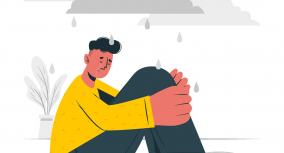
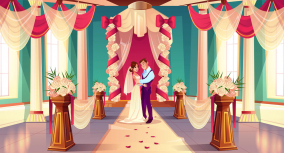
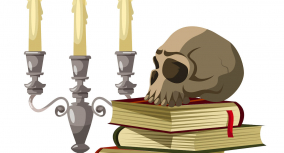
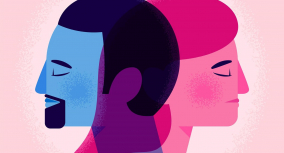
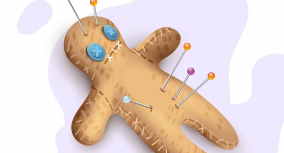
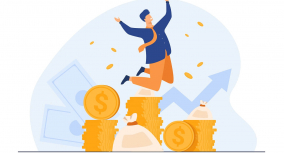
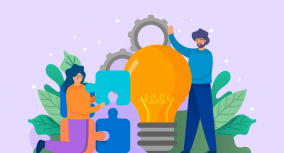

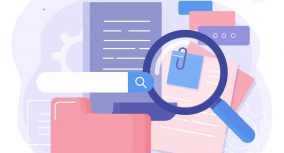
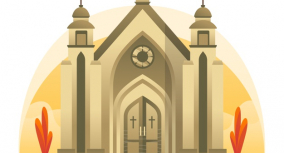


Very interesting, in-depth article. Enjoyed it. I shared link to it.